Mineral Deposit Type Target(s)
- Telfer Gold-Copper type deposits
- Stratiform base metal deposits
The Lamil Project is located in between the major mining operations of the Nifty Cu mine and the large Telfer Au-Cu mine within the Paterson Province, East Pilbara, Western Australia and is 100% owned by Rumble Resouces.
In July 2019 Rumble signed a $10m Farm Out of Lamil Project with AIC Mines (ASX: A1M). AIC can earn a 50% interest by spending $6 million over 4 years. Thereafter AIC can earn a further 15% by spending $4 million over 1 year if Rumble elects not to commence contributing.
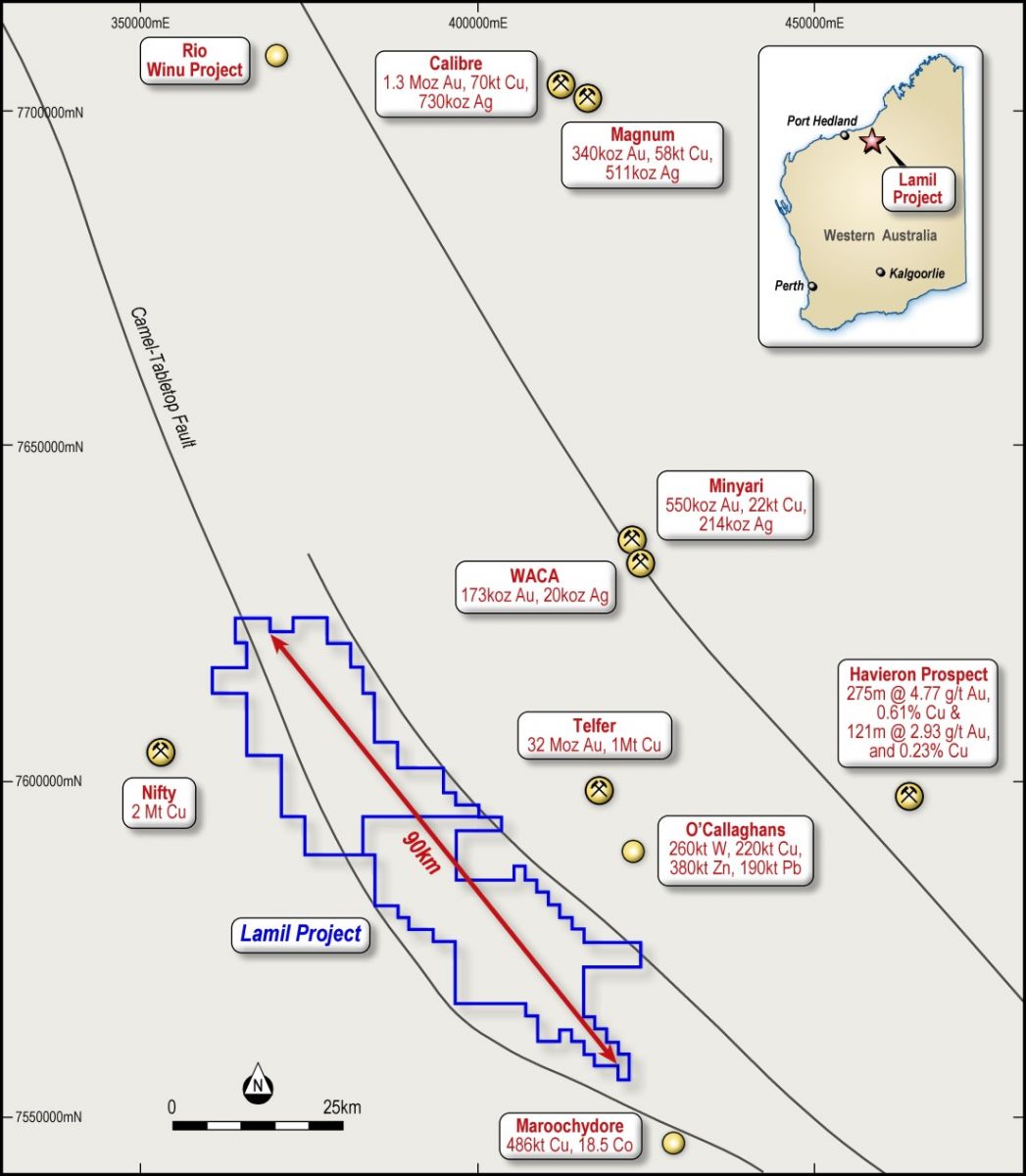
Image 1 – Lamil Project – located in between Nifty Cu mine and large Telfer Au-Cu mine and within the same region as the recent Winu copper-gold and Havieron gold-copper discoveries within the Paterson Province.
Paterson Province – Tier 1 Region
The Paterson Province is a globally recognised mineralised belt hosting the world-class Telfer gold and copper (32Moz Au, 1Mt Cu resource) and Nifty copper (2 Mt Cu resource) deposits.
The highly mineralised Paterson Province region is largely underexplored but has recently been subject to exploration from various groups targeting large scale stratiform Cu, sediment hosted Zn-Pb, potential iron oxide copper gold (IOCG) and sediment hosted vein copper – gold Telfer Style deposits.
Recent developments in the region include mining major Rio Tinto Limited (ASX: RIO) announcing the large Winu copper-gold discovery and Greatland Gold plc defining the Havieron gold-copper discovery, which has recently been subject to a US$65m farm in agreement with mining major Newcrest Mining (ASX: NCM).
Multitude of Tier 1 Prospects
Some twenty-six (26) gold-copper targets have now been identified by AIC (refer image 2). They represent a combination of key structural locations with varying levels of confidence in depth to basement/depth of cover. Encouragingly, a number of these have been identified within the northern part of E45/5271 and further to the north within E45/5270 where regional magnetic data alone was insufficient to enable detailed interpretation of the basement structural architecture.
- Four (4) Priority 1 Targets have been identified in areas where depth to basement is interpreted to be shallow, ie <60m, and confidence in modelling is highest. These are “drill ready”.
- Eleven (11) Priority 2 Targets have been identified in areas where depth to basement is also interpreted to be shallow, ie 60m and confidence in modelling is moderate.
- Eleven (11) Priority 3 targets have been identified in areas where basement is interpreted to be shallow to moderate in depth. However, confidence in modelling with the available data at this stage is low. These targets are key structural intersections which will be investigated following favourable results from additional work on the Priority 1 and Priority 2 areas.
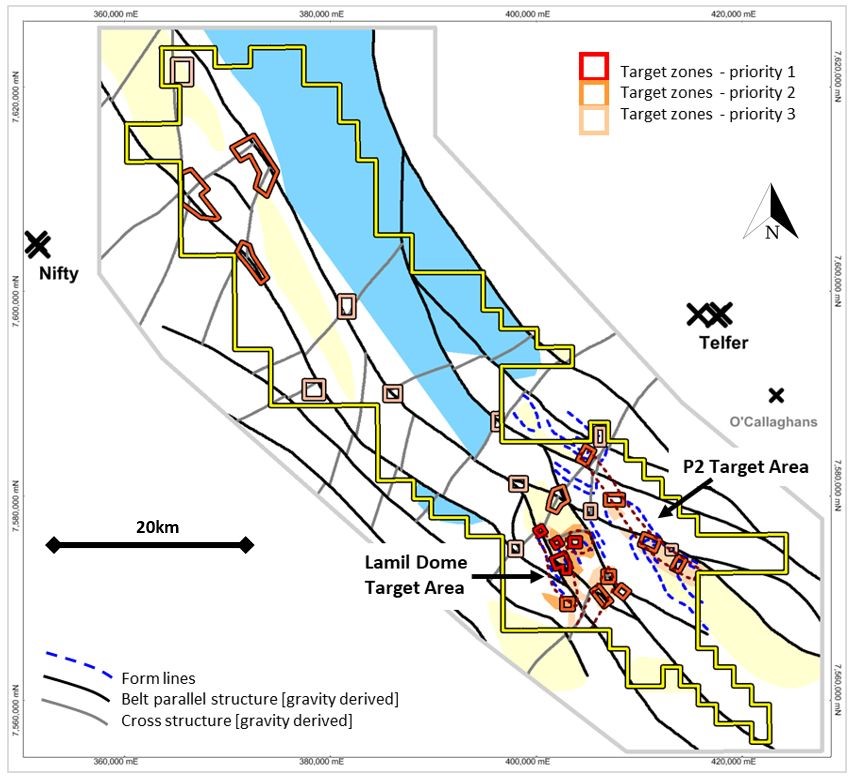
Image 2 – Drill Targets
Lamil Dome – Key Target of interest
The broad dimensions of the Lamil Dome are similar to those of Telfer, being 8 km long and 4 km wide with its long axis, like Telfer, oriented NW. The synthesis of detailed magnetic, gravity and passive seismic data has greatly enhanced its internal and proximal details. Rather than being a single antiform, the Lamil Dome is now interpreted to comprise an en-echelon, asymmetric, double-plunging, antiform-synform complex with sub-ordinate domal features situated within and adjacent to the larger dome outline. These features are considered analogous to the similarly sub-ordinate “Main” and “West” Domes located within the broader Telfer Dome Deposit outline (32Moz Au, 1Mt Cu resource) which lies 30km to the northeast of Rumble’s Lamil Dome Target. Importantly, these subordinate domes are host to the bulk of gold and copper mineralisation at Telfer.
2 Major Breakthroughs:
- Based on detailed geophysics indicates that the depth of cover over the main targets at Lamil is <100m. Cover was previously thought to be >400m and as a result the area has seen minimal previous exploration and no drilling.
- The recognition of a previously unmapped regional scale NE-SW trending structure which is traceable for at least 30 kilometres from the centre of Telfer through the northern margin of the Lamil Dome.
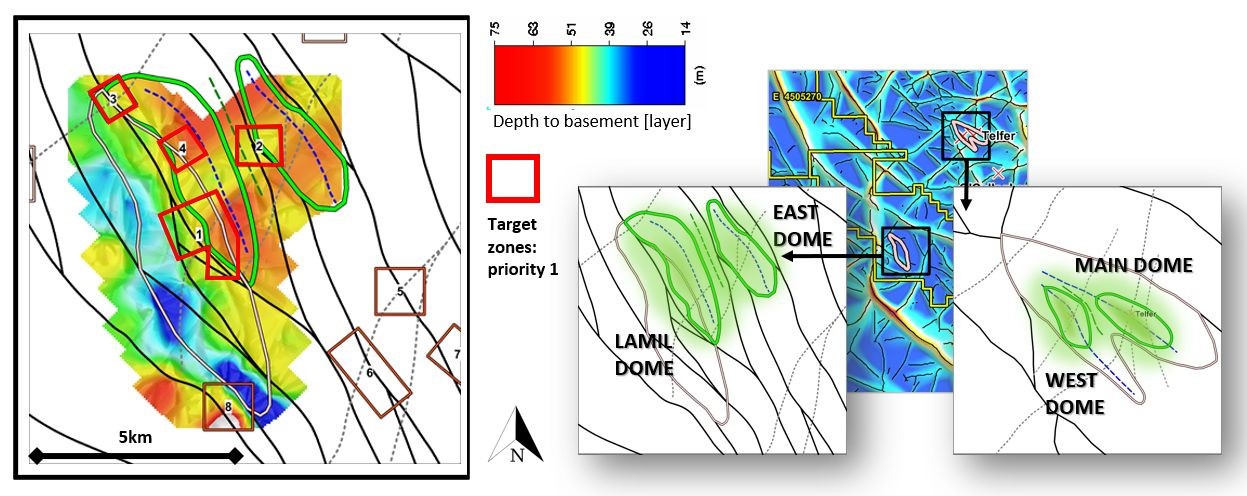
Image 3 – Priority Drill Targets and Lamil Dome Area – schematic interpretation over shaded passive seismic depth to basement layer. Red indicates shallow basement. Schematic Telfer comparison (RHS).
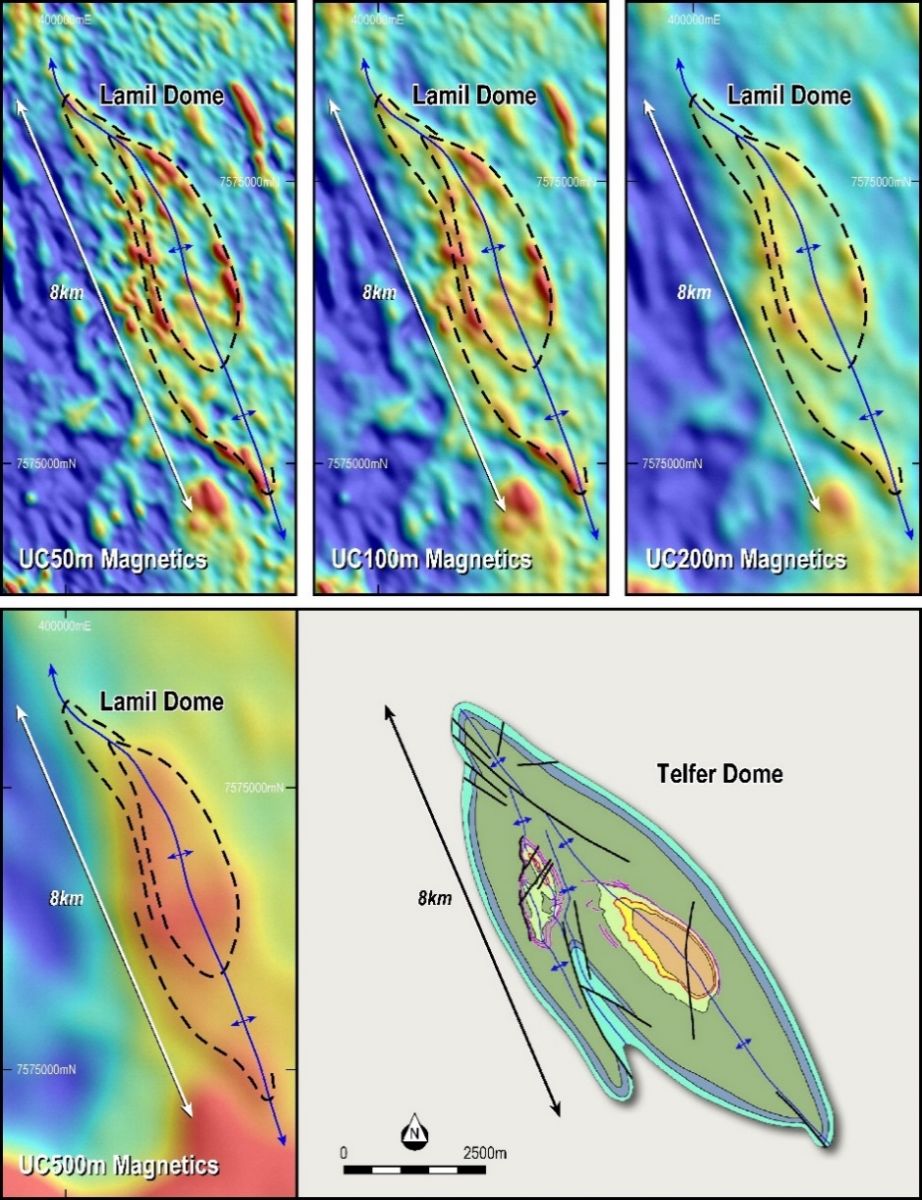
Image 4 – Lamil Dome Target – Series of Upward Continued Magnetic Images highlighting the “Lamil Dome” which has similar dome size, trend and host rocks to the Telfer Au – Cu deposit (32Moz Au, 1Mt Cu resource) a large dome structure which lies 30km to the northeast of Rumble’s Lamil Dome Target.
Regional Setting
The Lamil Project occupies a prominent regional structural “hinge zone” which is clearly defined by a significant flexure in a set of major belt parallel structures. The structures trend NNW in E45/5270 (the northern tenement) and swing NW in E45/5271 (the southern tenement). The hinge transition is dissected by a series of major NE trending structures extending through the tenement package and linking across to the Telfer gold-copper deposit.
The most noteworthy of these NE cross structures correlates with the well documented Telfer “Main” Dome structures and is traceable for over 30 kilometres to the northern boundary of the Lamil Dome. These features present a potential locus of deep crustal faulting and an associated plumbing system for circulating and trapping mineralising fluids (refer Image 2).
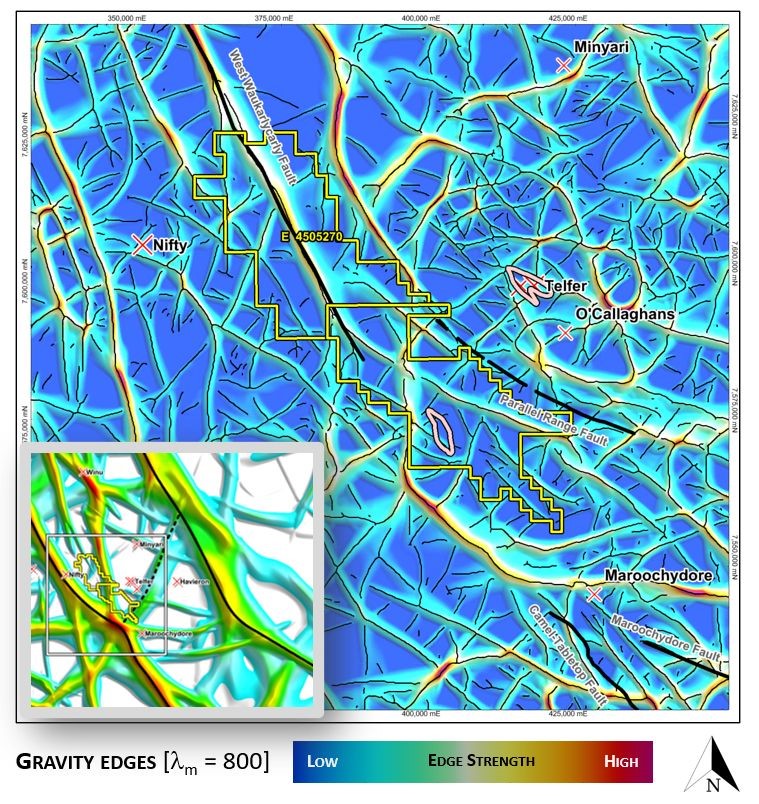
Image 5 – Regional Review – Gravity Derived Edges

